 W
WA rock is any naturally occurring solid mass or aggregate of minerals or mineraloid matter. It is categorized by the minerals included, its chemical composition and the way in which it is formed. Rocks are usually grouped into three main groups: igneous rocks, metamorphic rocks and sedimentary rocks. Rocks form the Earth's outer solid layer, the crust, and most of its interior, except for the liquid outer core and pockets of magma in the asthenosphere.
 W
WAlabaster is a mineral or rock that is soft, often used for carving, and is processed for plaster powder. Archaeologists and the stone processing industry use the word differently from geologists. The former use it in a wider sense that includes varieties of two different minerals: the fine-grained massive type of gypsum and the fine-grained banded type of calcite. Geologists define alabaster only as the gypsum type. Chemically, gypsum is a hydrous sulfate of calcium, while calcite is a carbonate of calcium.
 W
WArizona flagstone is composed of rounded grains of quartz which are cemented by silica. Other minerals are present, mostly as thin seams of clay, mica, secondary calcite, and gypsum. Arizona flagstone is mainly quarried from the Coconino and Prescott National Forests.
 W
WA baking stone is a portable cooking surface used in baking. It may be made of ceramic, stone or, more recently, salt. Food is put on the stone, which is then placed in an oven, though sometimes the stone is heated first. Baking stones are used much like cookie sheets, but may absorb additional moisture for crispier food. A pizza stone is a baking stone designed for cooking pizza.
 W
WChipseal is a pavement surface treatment that combines one or more layer(s) of asphalt with one or more layer(s) of fine aggregate. In the United States, chipseals are typically used on rural roads carrying lower traffic volumes, and the process is often referred to as asphaltic surface treatment. This type of surface has a variety of other names including tar-seal or tarseal, tar and chip, sprayed seal or surface dressing.
 W
WA cobble is a clast of rock defined on the Udden–Wentworth scale as having a particle size of 64–256 millimeters (2.5–10.1 in), larger than a pebble and smaller than a boulder. Other scales define a cobble's size in slightly different terms. A rock made predominantly of cobbles is termed a conglomerate. Cobblestone is a building material based on cobbles.
 W
WCobblestone is a natural building material based on cobble-sized stones, and is used for pavement roads, streets, and buildings.
 W
WConstruction aggregate, or simply aggregate, is a broad category of coarse- to medium-grained particulate material used in construction, including sand, gravel, crushed stone, slag, recycled concrete and geosynthetic aggregates. Aggregates are the most mined materials in the world. Aggregates are a component of composite materials such as concrete and asphalt concrete; the aggregate serves as reinforcement to add strength to the overall composite material. Due to the relatively high hydraulic conductivity value as compared to most soils, aggregates are widely used in drainage applications such as foundation and French drains, septic drain fields, retaining wall drains, and roadside edge drains. Aggregates are also used as base material under foundations, roads, and railroads. In other words, aggregates are used as a stable foundation or road/rail base with predictable, uniform properties, or as a low-cost extender that binds with more expensive cement or asphalt to form concrete.
 W
WCrushed stone or angular rock is a form of construction aggregate, typically produced by mining a suitable rock deposit and breaking the removed rock down to the desired size using crushers. It is distinct from gravel which is produced by natural processes of weathering and erosion, and typically has a more rounded shape.
 W
WDecomposed granite is classification of rock that is derived from granite via its weathering to the point that the parent material readily fractures into smaller pieces of weaker rock. Further weathering yields material that easily crumbles into mixtures of gravel-sized particles known as grus, that further may break down to produce a mixture of clay and silica sand or silt particles. Different specific granite types have differing propensities to weather, and so differing likelihoods of producing decomposed granite. It has practical uses that include its incorporation into paving and driveway materials, residential gardening materials in arid environments, as well as various types of walkways and heavy-use paths in parks. Different colors of decomposed granite are available, deriving from the natural range of granite colors from different quarry sources, and admixture of other natural and synthetic materials can extend the range of decomposed granite properties.
 W
WThis is a geographical list of natural stone used for decorative purposes in construction and monumental sculpture produced in various countries.
 W
WDry stone, sometimes called drystack or, in Scotland, drystane, is a building method by which structures are constructed from stones without any mortar to bind them together. Dry stone structures are stable because of their construction method, which is characterized by the presence of a load-bearing façade of carefully selected interlocking stones.
 W
WFieldstone is a naturally occurring type of stone, which lies at or near the surface of the Earth. Fieldstone is a nuisance for farmers seeking to expand their land under cultivation, but at some point it began to be used as a construction material. Strictly speaking, it is stone collected from the surface of fields where it occurs naturally. Collections of fieldstones which have been removed from arable land or pasture to allow for more effective agriculture are called clearance cairns.
 W
WFlagstone (flag) is a generic flat stone, sometimes cut in regular rectangular or square shape and usually used for paving slabs or walkways, patios, flooring, fences and roofing. It may be used for memorials, headstones, facades and other construction. The name derives from Middle English flagge meaning turf, perhaps from Old Norse flaga meaning slab or chip.
 W
WGravel is a loose aggregation of rock fragments. Gravel is classified by particle size range and includes size classes from granule- to boulder-sized fragments. In the Udden-Wentworth scale gravel is categorized into granular gravel and pebble gravel. ISO 14688 grades gravels as fine, medium, and coarse with ranges 2 mm to 6.3 mm to 20 mm to 63 mm. One cubic metre of gravel typically weighs about 1,800 kg.
 W
WA gravel road is a type of unpaved road surfaced with gravel that has been brought to the site from a quarry or stream bed. They are common in less-developed nations, and also in the rural areas of developed nations such as Canada and the United States. In New Zealand, and other Commonwealth countries, they may be known as metal roads. They may be referred to as "dirt roads" in common speech, but that term is used more for unimproved roads with no surface material added. If well constructed and maintained, a gravel road is an all-weather road.
 W
WGreen ubatuba is the commercial name of a Brazilian charnockite, although it is often sold as a granite. It comes from the Ubatuba area of Brazil, where it forms part of the Neoproterozoic Ribeira Belt. As its name indicates, it is green in color, dark green and almost a black appearance when seen in low light. It contains large (10 cm) phenocrysts of alkali feldspar. It is widely used in home renovations and landscaping.
 W
WHorsham Stone is a type of calcareous, flaggy sandstone containing millions of minute sand grains and occurring naturally in the Weald Clay of south-east England. It is also high in mica and quartz. The rock extends in an arc-like formation for several kilometres around the town of Horsham from which it takes its name, and lies just below the Weald Clay surface in bands 4 to 5 inches thick. Horsham Stone is significant for its ripple-marked appearance, formed by the action of the sea similar to the ripples on the sandbanks and beaches of Sussex.
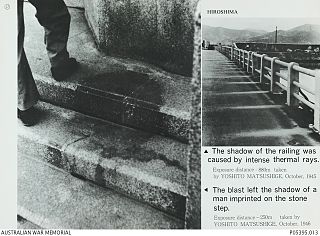 W
WHuman Shadow Etched in Stone is an exhibition at the Hiroshima Peace Memorial Museum. It is thought to be the residue of a person who was sitting at the entrance of Hiroshima Branch of Sumitomo Bank when the atomic bomb was dropped over Hiroshima. It is also known as Human Shadow of Death.
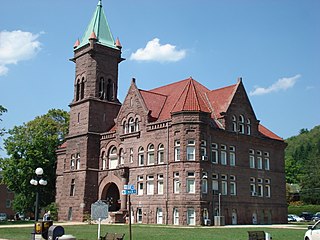 W
WHummelstown brownstone is a medium-grain, dense sandstone quarried near Hummelstown in Dauphin County, Pennsylvania, USA. It is a dark brownstone with reddish to purplish hues, and was once widely used as a building stone in the United States.
 W
WThis is a list of types of limestone arranged according to location. It includes both formal stratigraphic unit names and less formal designations.
 W
WMarble is a metamorphic rock composed of recrystallized carbonate minerals, most commonly calcite or dolomite. Marble is typically not foliated, although there are exceptions. In geology, the term marble refers to metamorphosed limestone, but its use in stonemasonry more broadly encompasses unmetamorphosed limestone. Marble is commonly used for sculpture and as a building material.
 W
WThe following is a list of various types of marble according to location.
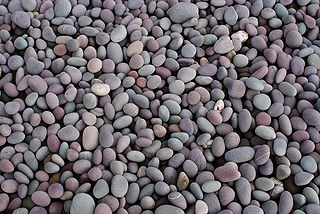 W
WA pebble is a clast of rock with a particle size of 4 to 64 millimetres based on the Krumbein phi scale of sedimentology. Pebbles are generally considered larger than granules and smaller than cobbles. A rock made predominantly of pebbles is termed a conglomerate. Pebble tools are among the earliest known man-made artifacts, dating from the Palaeolithic period of human history.
 W
WPetrifaction, or petrification, defined as turning people to stone, is a common theme in folklore and mythology, as well as in some works of modern literature.
 W
WPorphyry is a textural term for an igneous rock consisting of large-grained crystals such as feldspar or quartz dispersed in a fine-grained silicate rich, generally aphanitic matrix or groundmass. The larger crystals are called phenocrysts. In its non-geologic, traditional use, the term porphyry refers to the purple-red form of this stone, valued for its appearance.
 W
WQuarry-faced stone is stone with a rough, unpolished surface, straight from the quarry. Many residential and public buildings in Jerusalem, Israel are built from quarry-faced Jerusalem stone.
 W
WRock dumping vessels are a category of watercraft that exist for the purpose of dumping rocks on the seabed. They are able to transport and dump rocks of variable sizes. The vessels range from large bulk-carrier style vessels, able to carry out precision operations using fallpipes, to smaller deck-loading vessels mainly used for erosion remediation.
 W
WThis is a list of types of sandstone that have been or are used economically as natural stone for building and other commercial or artistic purposes.
 W
WSarsen stones are sandstone blocks found in quantity in the United Kingdom on Salisbury Plain and the Marlborough Downs in Wiltshire; in Kent; and in smaller quantities in Berkshire, Essex, Oxfordshire, Dorset, and Hampshire. They are the post-glacial remains of a cap of Cenozoic silcrete that once covered much of southern England – a dense, hard rock created from sand bound by a silica cement, making it a kind of silicified sandstone. This is thought to have formed during Neogene to Quaternary weathering by the silicification of Upper Paleocene Lambeth Group sediments, resulting from acid leaching.
 W
WA sett, also known as a block, Belgian block or sampietrini, is a broadly rectangular quarried stone used in paving roads and walkways. Formerly in widespread use, particularly on steeper streets because setts provided horses' hooves with better grip than a smooth surface, they are now encountered rather as decorative stone paving in landscape architecture. Setts are often wrongly referred to as "cobblestones", although a sett is distinct from a cobblestone in that it is quarried or worked to a regular shape, whereas the latter is generally a small, naturally-rounded rock. Setts are usually made of granite.
 W
WSlate is a fine-grained, foliated, homogeneous metamorphic rock derived from an original shale-type sedimentary rock composed of clay or volcanic ash through low-grade regional metamorphism. It is the finest grained foliated metamorphic rock. Foliation may not correspond to the original sedimentary layering, but instead is in planes perpendicular to the direction of metamorphic compression.
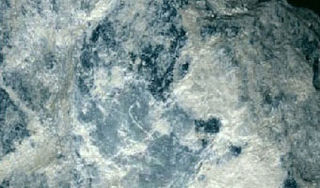 W
WSoapstone is a talc-schist, which is a type of metamorphic rock. It is composed largely of the magnesium rich mineral talc. It is produced by dynamothermal metamorphism and metasomatism, which occur in the zones where tectonic plates are subducted, changing rocks by heat and pressure, with influx of fluids, but without melting. It has been a medium for carving for thousands of years.
 W
WStone carving is an activity where pieces of rough natural stone are shaped by the controlled removal of stone. Owing to the permanence of the material, stone work has survived which was created during our prehistory.
 W
WIndia possesses a wide spectrum of dimensional stones that include granite, marble, sandstone, limestone, slate, and quartzite, in various parts of the country.
 W
WA tessera is an individual tile, usually formed in the shape of a cube, used in creating a mosaic. It is also known as an abaciscus or abaculus.
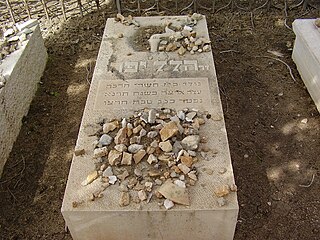 W
WThe act of placing visitation stones is significant in Jewish bereavenment practices. Small stones are placed by people who visit Jewish graves in an act of remembrance or respect for the deceased. The practice is a way participating in the mitzvah of burial. The stone is placed by the left hand.